Not much to chose from among our bird visitors today, so here is another Bronzewing cooling its heels…
Learn more about the Common Bronzewing
Category: Which Bird?
Three is a crowd
Bronzewing pigeons are regular visitors to our watering hole. They need regular refreshment when the heat is on. But you would think they’d be more accommodating when a friend comes to visit…
Learn more about the Common Bronzewing
Red Wattlebird
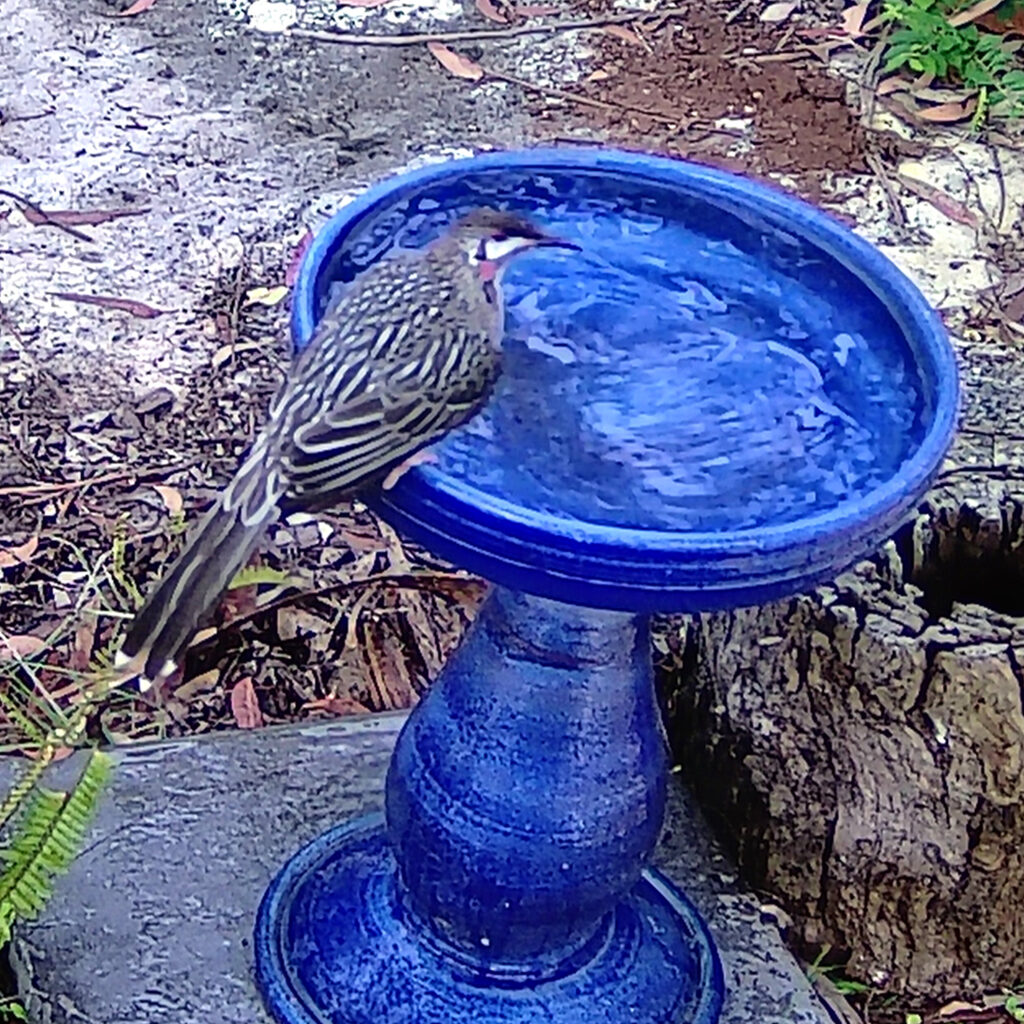
Here is another long term “friend of the family”, the Red Wattlebird, often seen when there are flowering gums or Banksia nearby.
Learn more about the Red Wattlebird
Male Bowerbird?
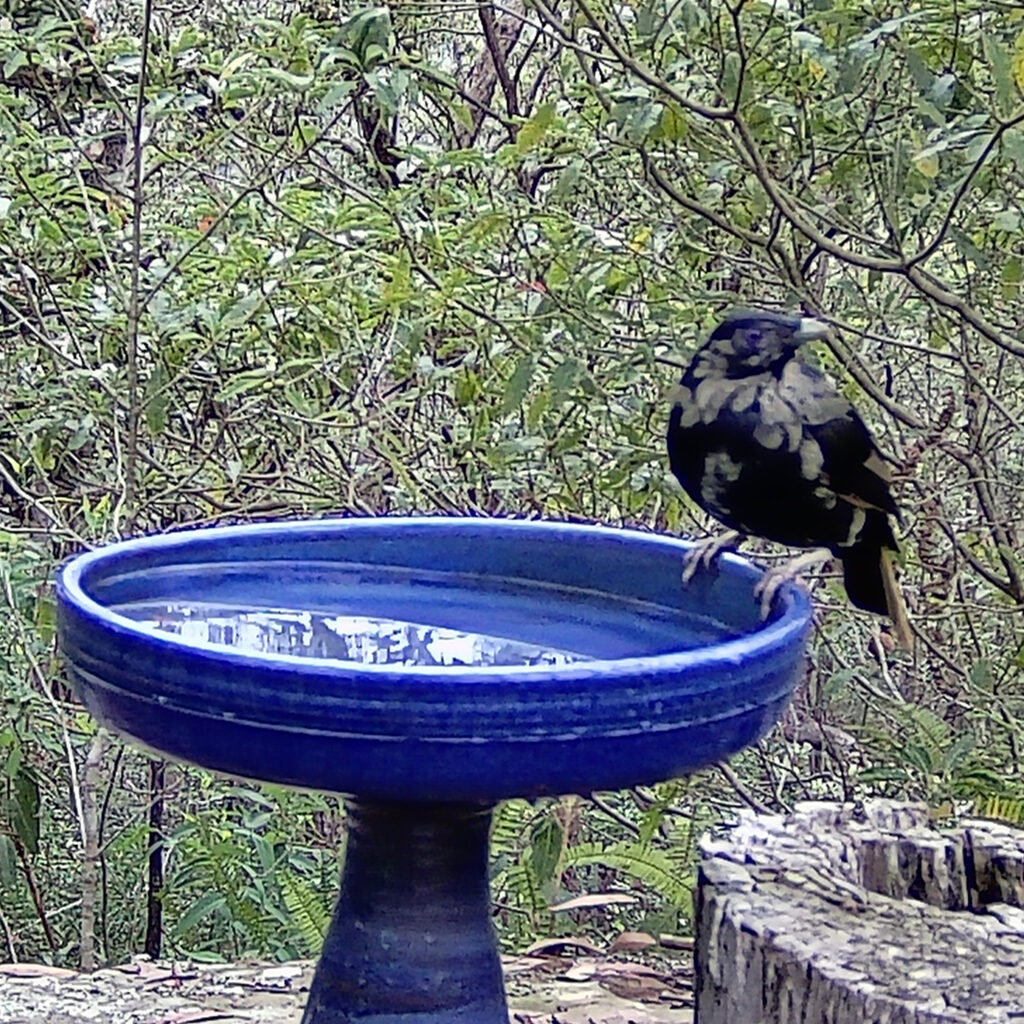
It’s been terrific to get feedback and comments via the BB Facebook group. To continue on yesterday’s topic, would this be a moulting male Satin Bowerbird on its way to turn into a glossy black bird? That would then also identify it on this earlier post.
Update: Come to think of it, there was an adult male bird back last month when I was just starting…
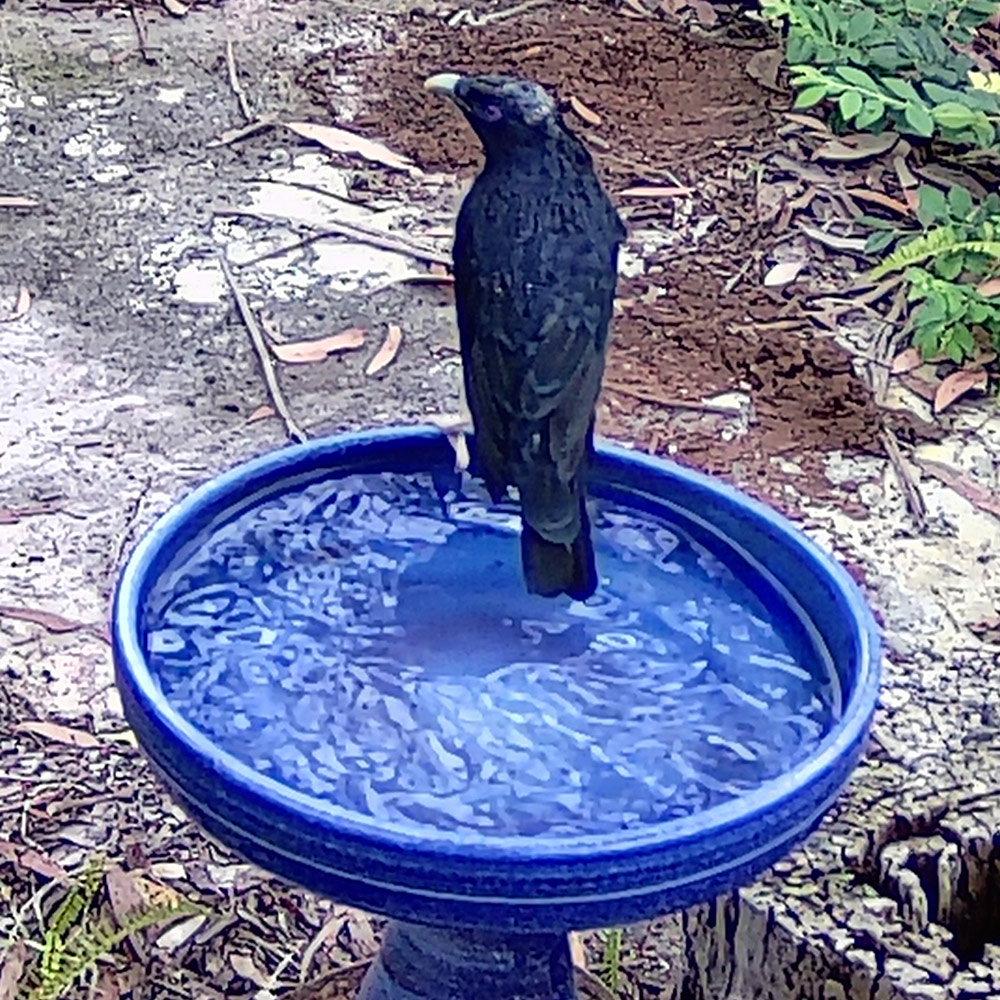
Learn more about the Satin Bowerbird
Satin Bowerbird
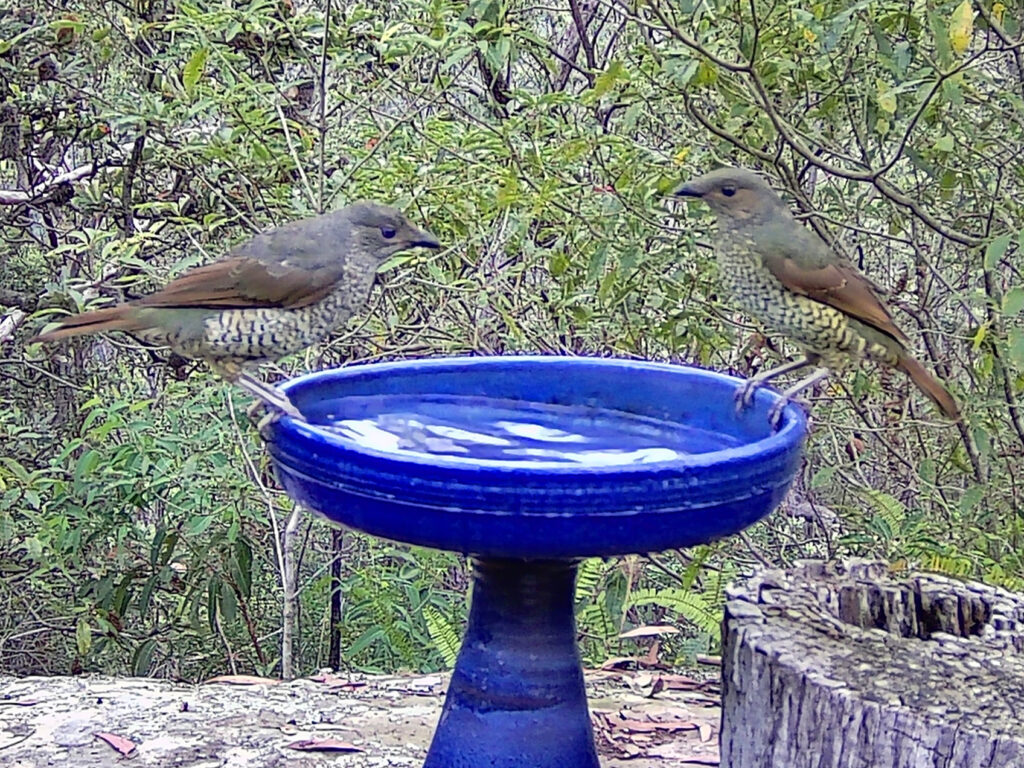
Thanks to an old friend, Karl Ankers, we’ve decided the bird from an earlier post (and pictured above) is the Satin Bowerbird. They’ve been regulars at the water bowl. The male apparently develops a satiny black sheen after seven years, so I assume one of the these is a young male…
Learn more about the Satin Bowerbird
Crested Pigeon
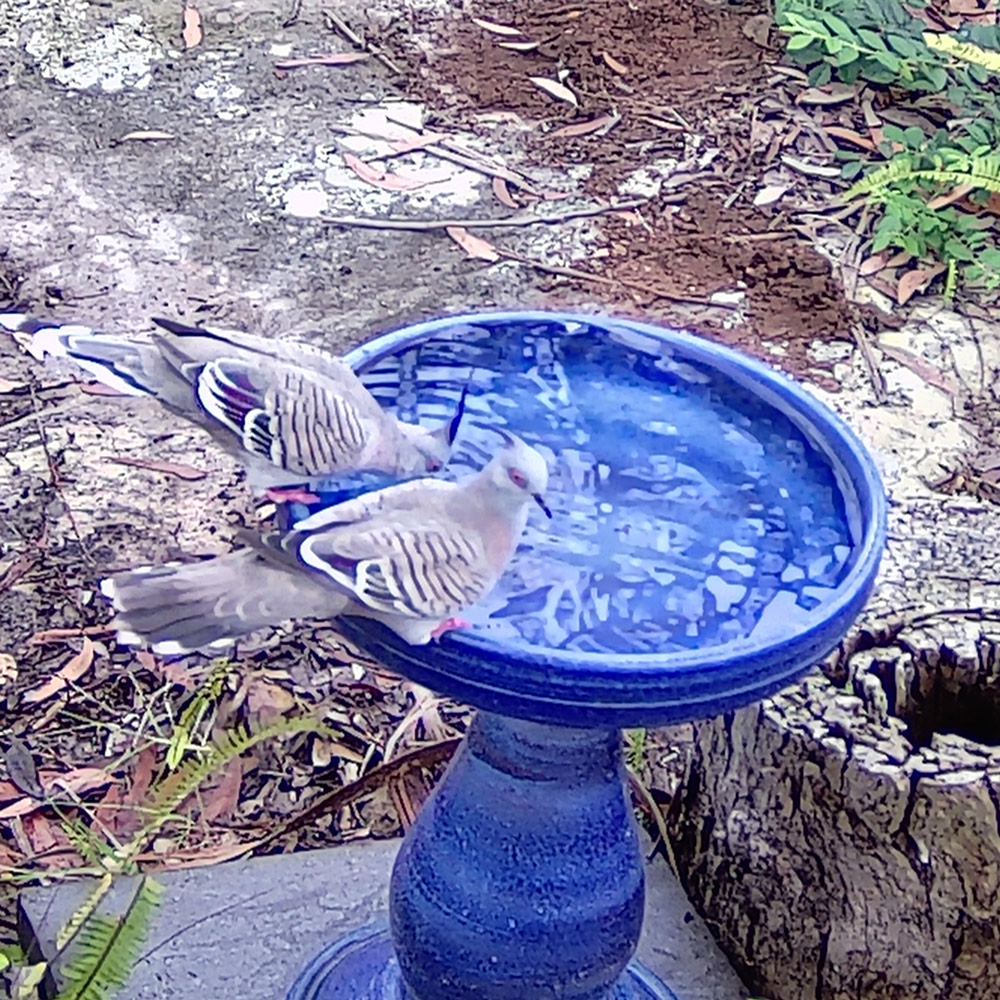
We might not think of pigeons as native Australian birds, there are several, such as the Crested Pigeon which the camera captured here a few days ago.
Learn more about the Crested Pigeon.
Noisy Friarbird
Some might think: “Not the best looking bird around”, the Noisy Friarbird is a regular around here, particularly when there are flowers in the bushes and trees.
More about the Noisy Friarbird
Currawong
We confuse Magpies and Currawongs. This project forced me to tell the difference and Wikipedia convinced me that this is the Pied Currawong. They don’t seem as abundant in our backyard as years ago. Possibly because of the huge influx of Sulphur Crested Cockatoos in our area.
More about the Pied Currawong
Taking turns
Noisy Miners
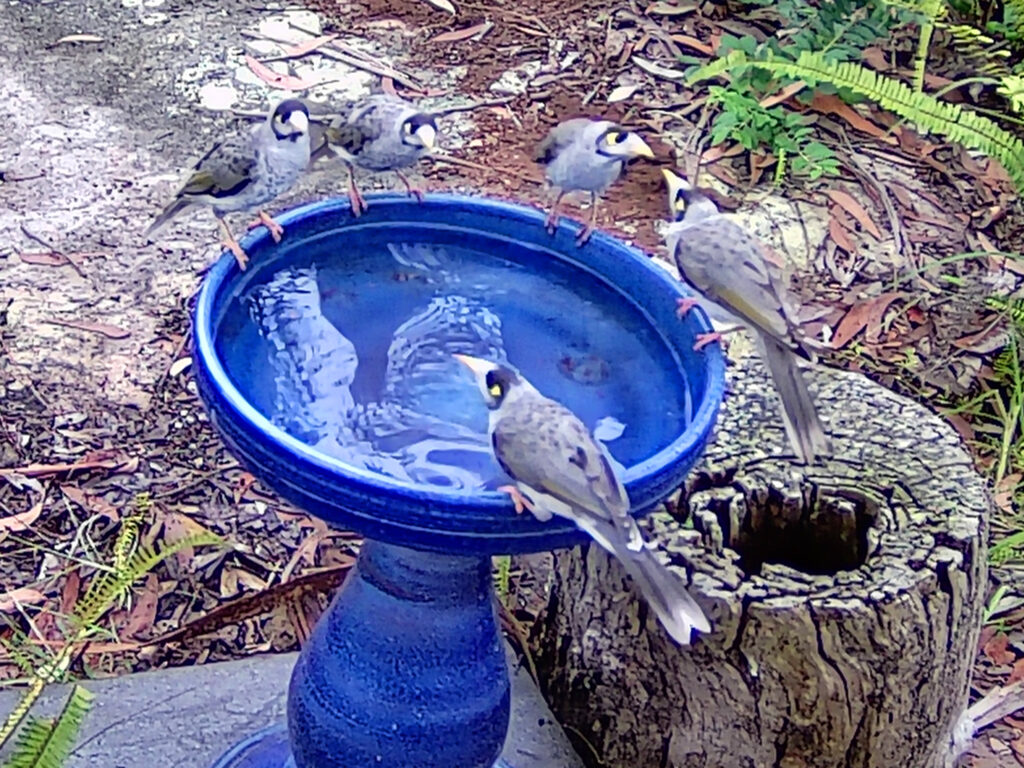
A really common bird along the East board of Australia is the Noisy Miner (not to be confused with Indian Mynas, which no doubt we’ll come across sooner or later). They’re noisy and enjoy company. More…